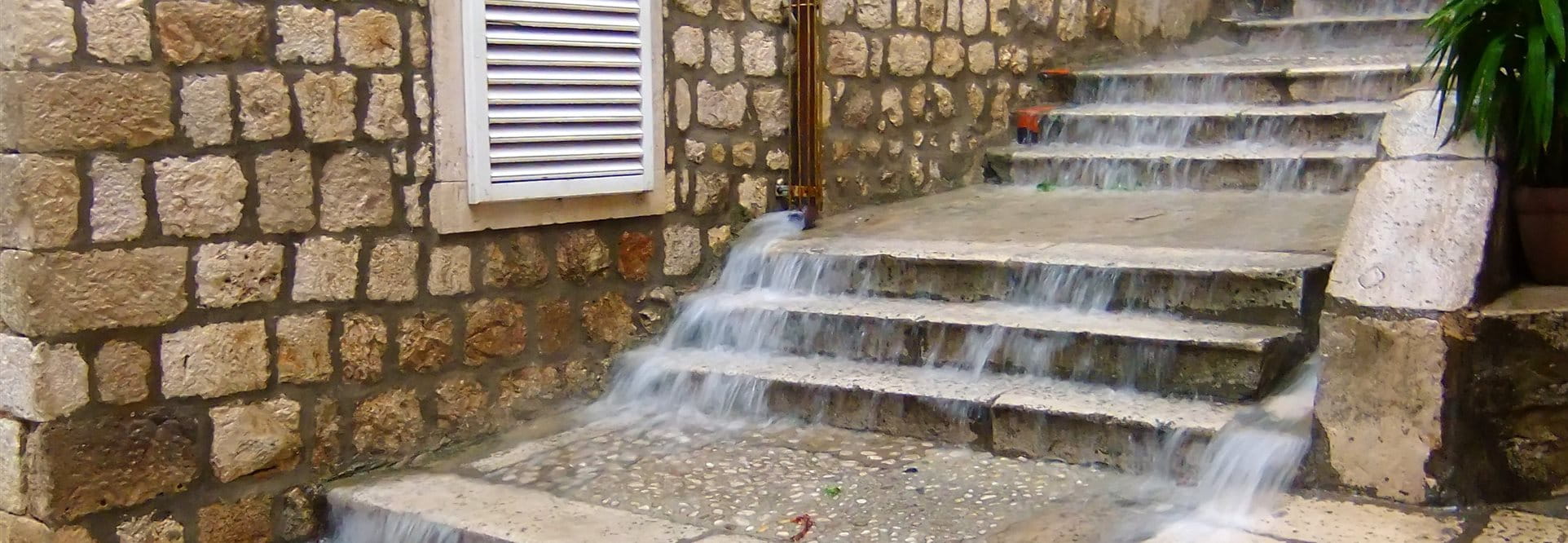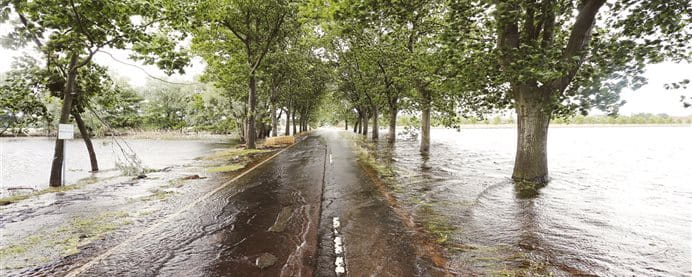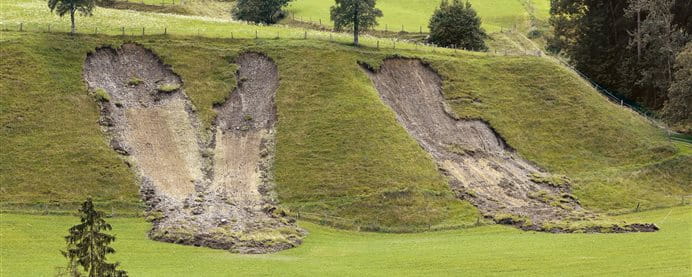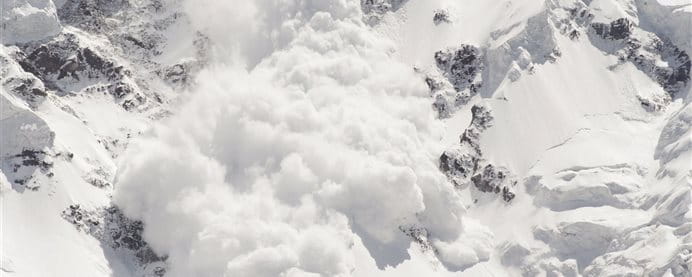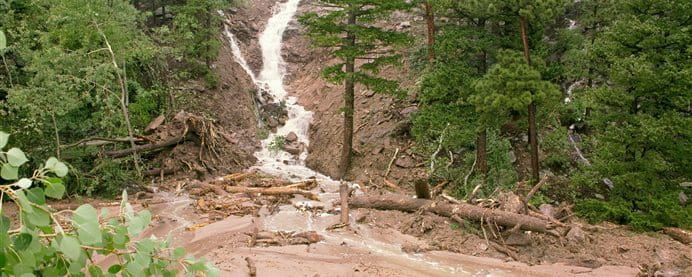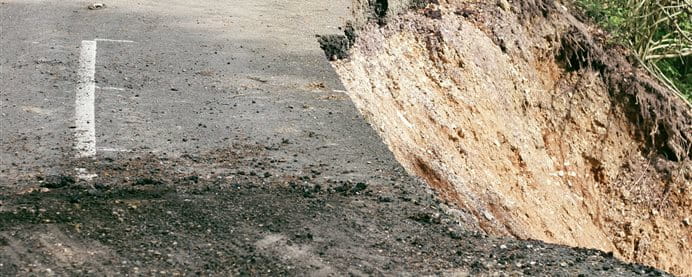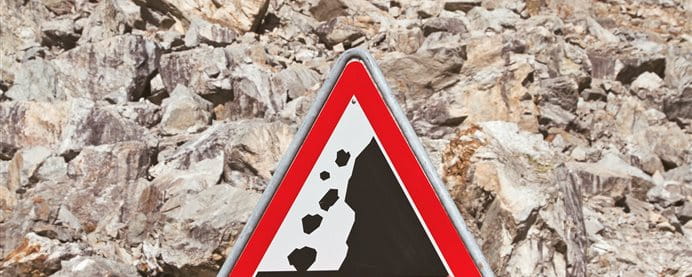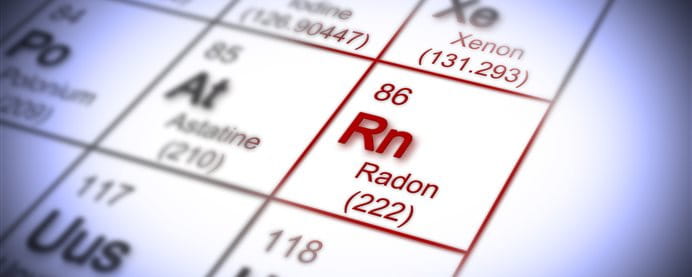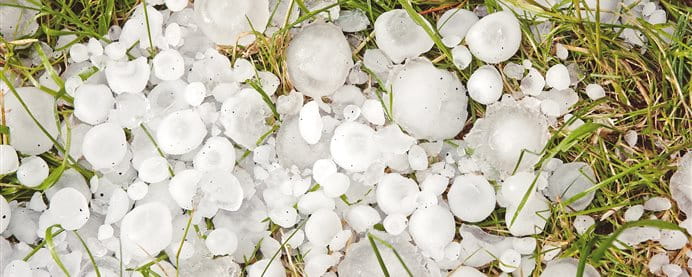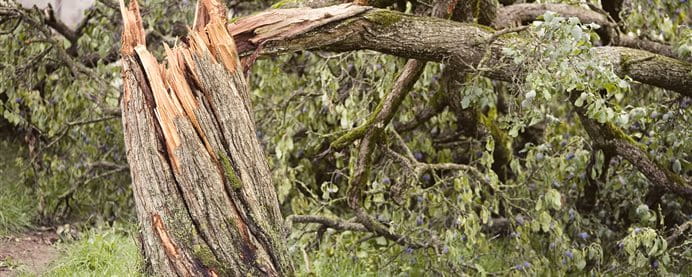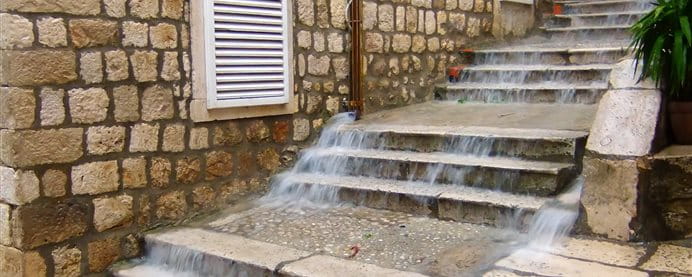After heavy and prolonged precipitation, asphalted or parched ground is no longer able to absorb the rain. Water begins to flow unchecked on the surface.
On June 11, 2018, the region of Lausanne received as much rain in ten minutes as it usually does in two weeks. More than 40 liters of rain per square meter pelted down. It was as if a liter of water were poured into a container meant to hold one fifth that amount.
The consequences of heavy or long-lasting rainfalls cause damage averaging a total of 300 million Swiss francs a year. A notable aspect of this phenomenon is that nearly half of the flooding damage in Switzerland is attributable to surface water run-off. Heavy rainfalls often put areas under water that are neither on a lake nor on streams or rivers, as shown in the example of the Lausanne train station or the city of Zofingen in June 2017. These findings come from damage analyses by insurance companies, among other sources. The total damage caused by surface run-off alone averages about 140 million Swiss francs a year. However, the extent of damage varies greatly from one year to the next.
Surface run-off increases when the ground is paved, completely parched or already saturated with water following a lengthy period of rain. Additional rainwater no longer seeps into the earth, collecting on the surface instead. As a result, huge puddles can form on level fields and other flat areas such as athletic fields or parking lots. On slopes, the excess water literally runs off. It can reach speeds of 20 km/h and more while at the same time building up dangerous forces, especially if large amounts of water flow together.
The masses of water often carry away mud, leaves and branches from trees as well as other materials while cutting their way along the fastest path to lower-lying terrain over streets and other man-made or natural corridors. Incidentally, parched land cannot absorb large amounts of rain in a short period of time. Sparse, shriveled plant cover provides worse protection for the ground against the impact of raindrops, causing them to create mud and seal the pores on the ground surface.
If ground is rendered impermeable from structures such as roads and buildings, less water can seep into the soil when it rains. In Switzerland, one square meter of land is rendered impermeable in this manner per second. Water runs off on the surface and can heighten the danger of flooding. Switzerland is a densely populated country and there is a steady rise in the value but also the vulnerability of infrastructures such as traffic routes, buildings or lines affected by natural hazards. This situation has prompted the federal government to team up with insurance companies to draw up a new hazard map. It shows which areas in Switzerland can be affected by surface water run-off or standing water and the extent of this effect.
The surface run-off map marks all areas throughout Switzerland that can be affected by surface water. The potentially endangered areas are marked in varying shades of violet based on the hazard level (the expected depth of flowing or standing water). The darker the color, the deeper the surface water is expected to be. The electronic map is drawn on a scale of 1:12,500 and is publicly available. It shows whether a certain property might be endangered or not. However, to interpret the findings from the surface run-off map correctly, it is essential for an expert to clarify the situation on site.
